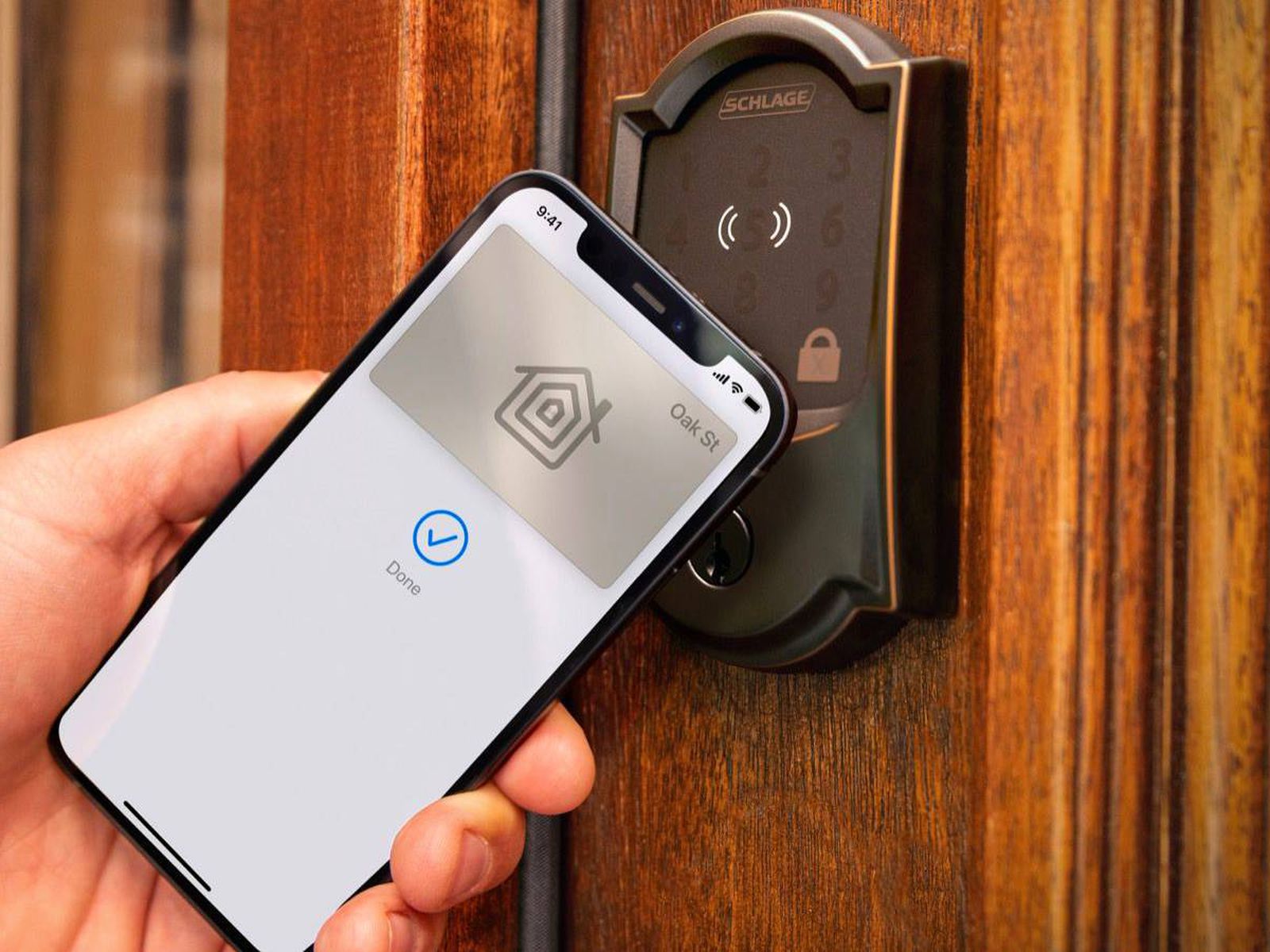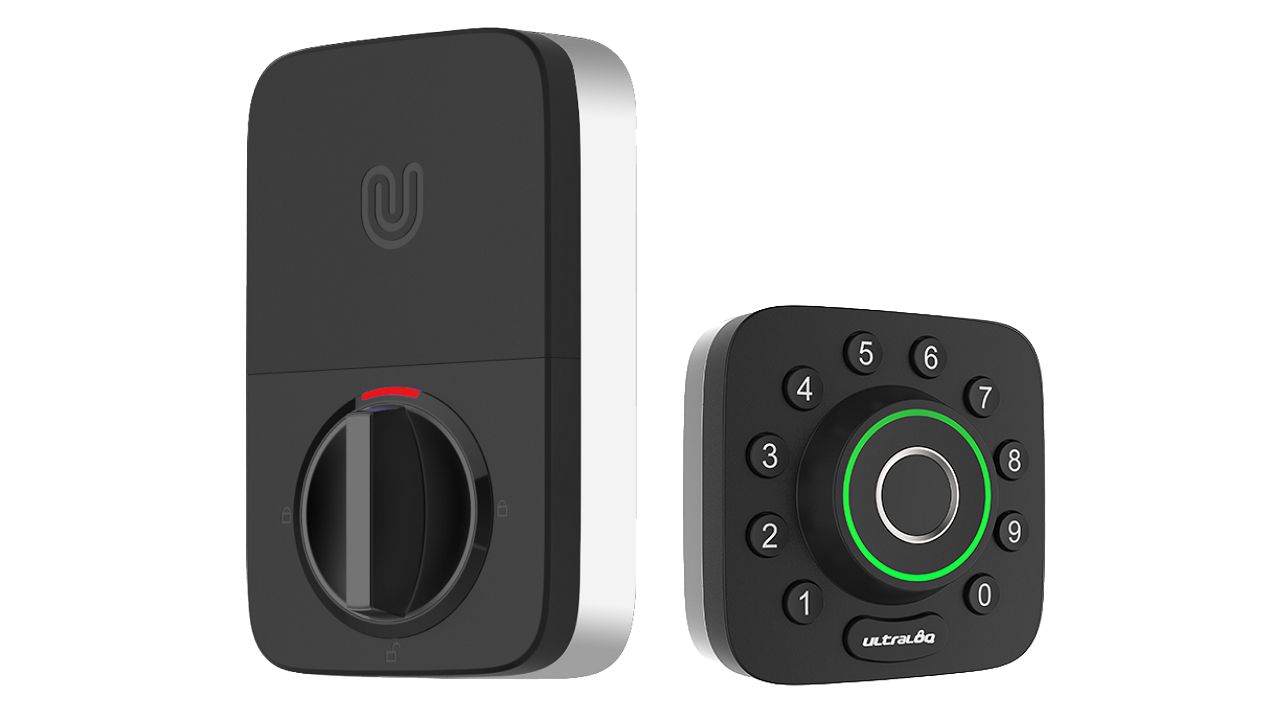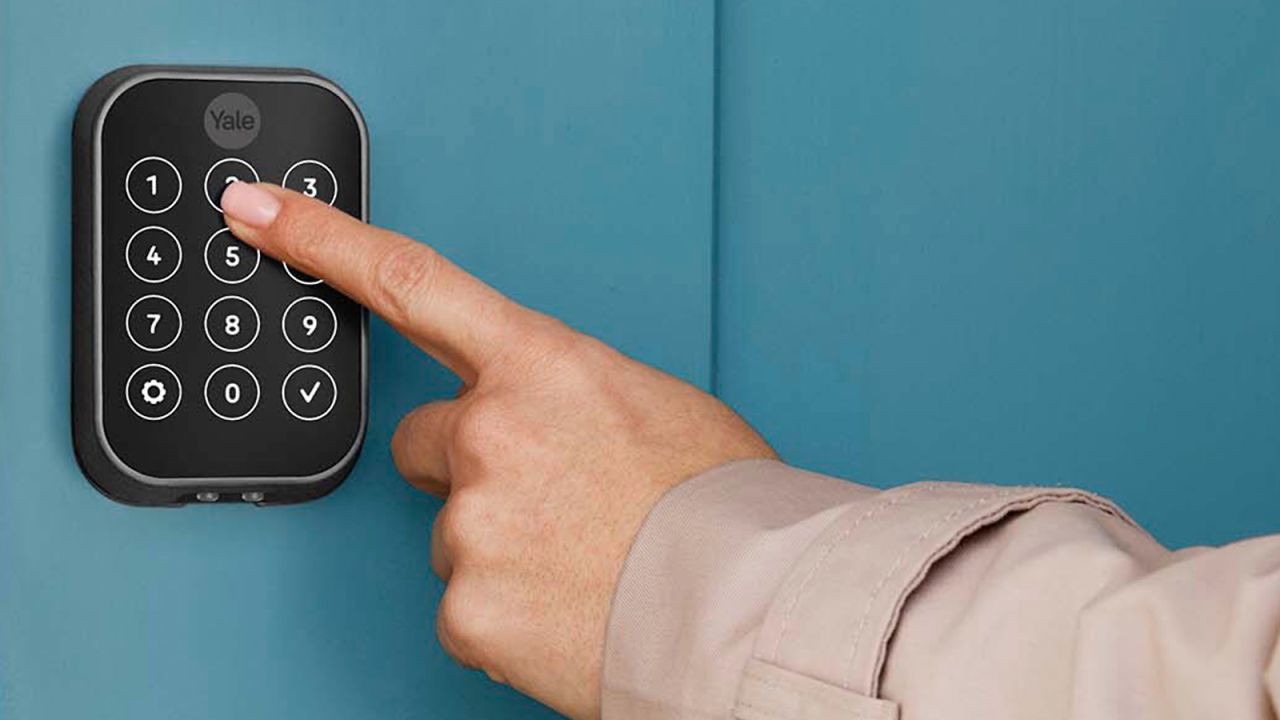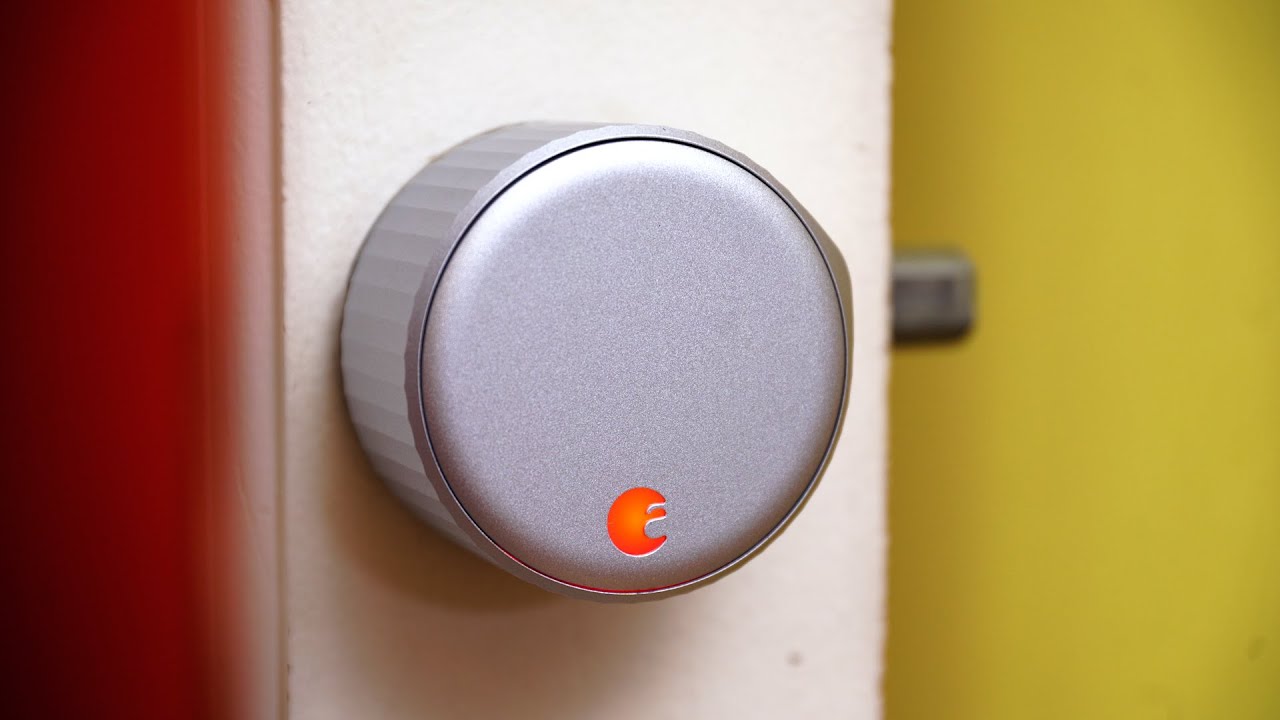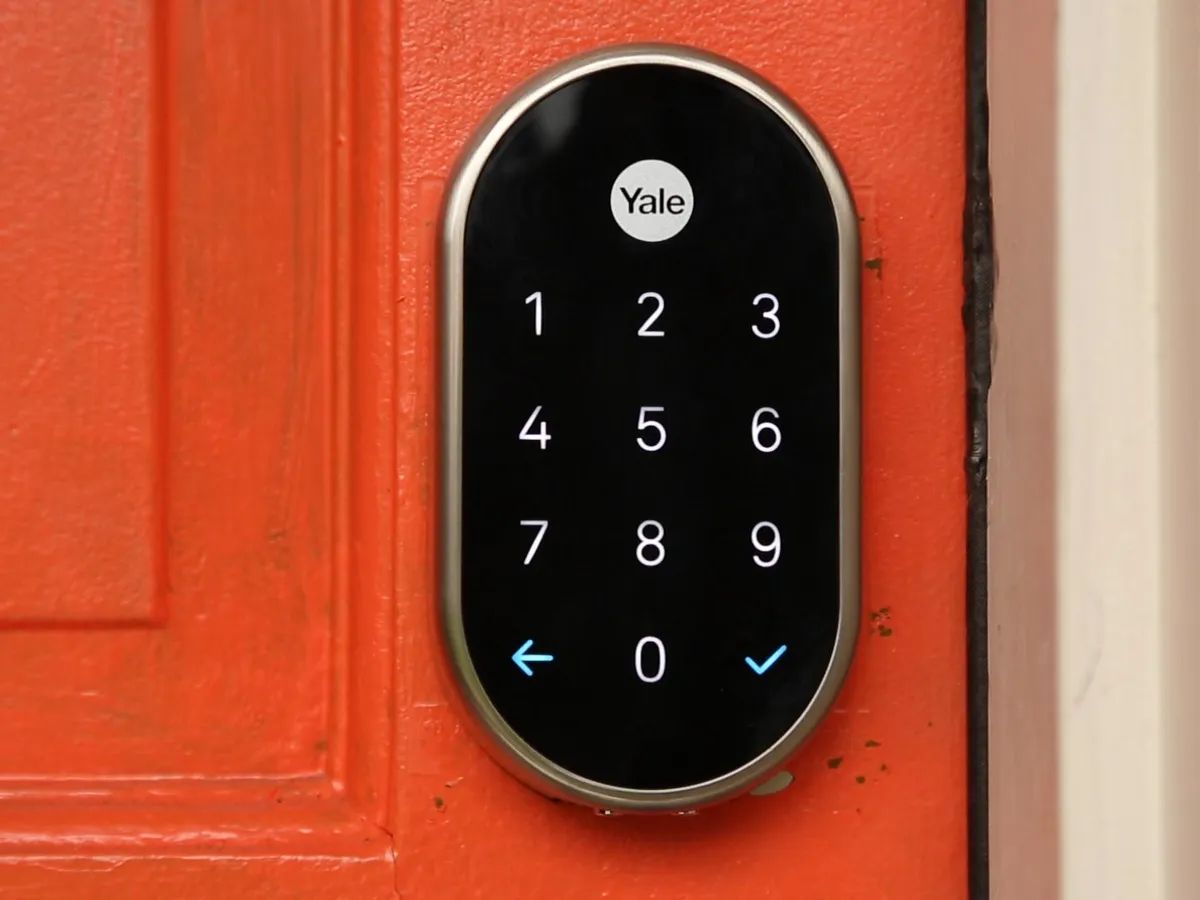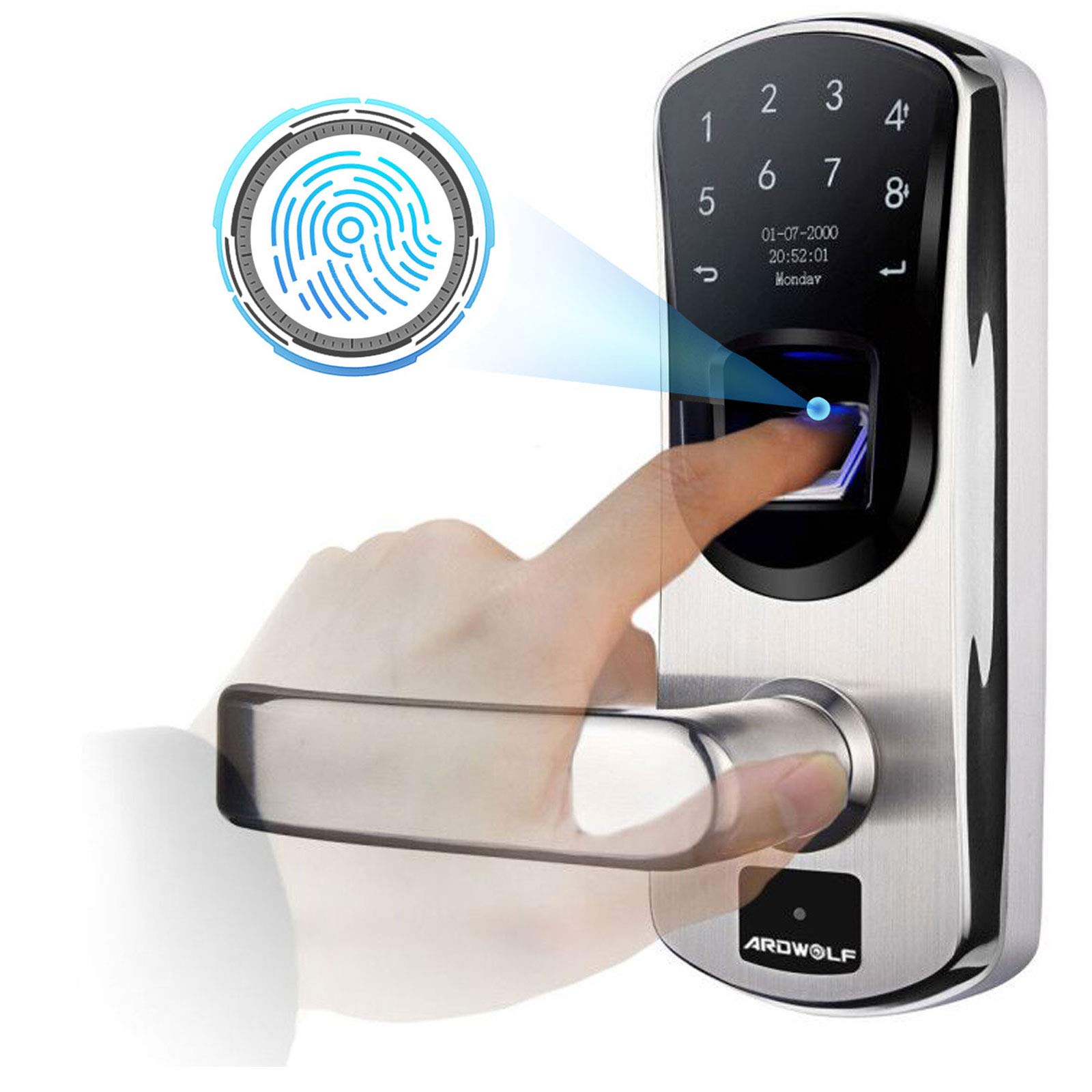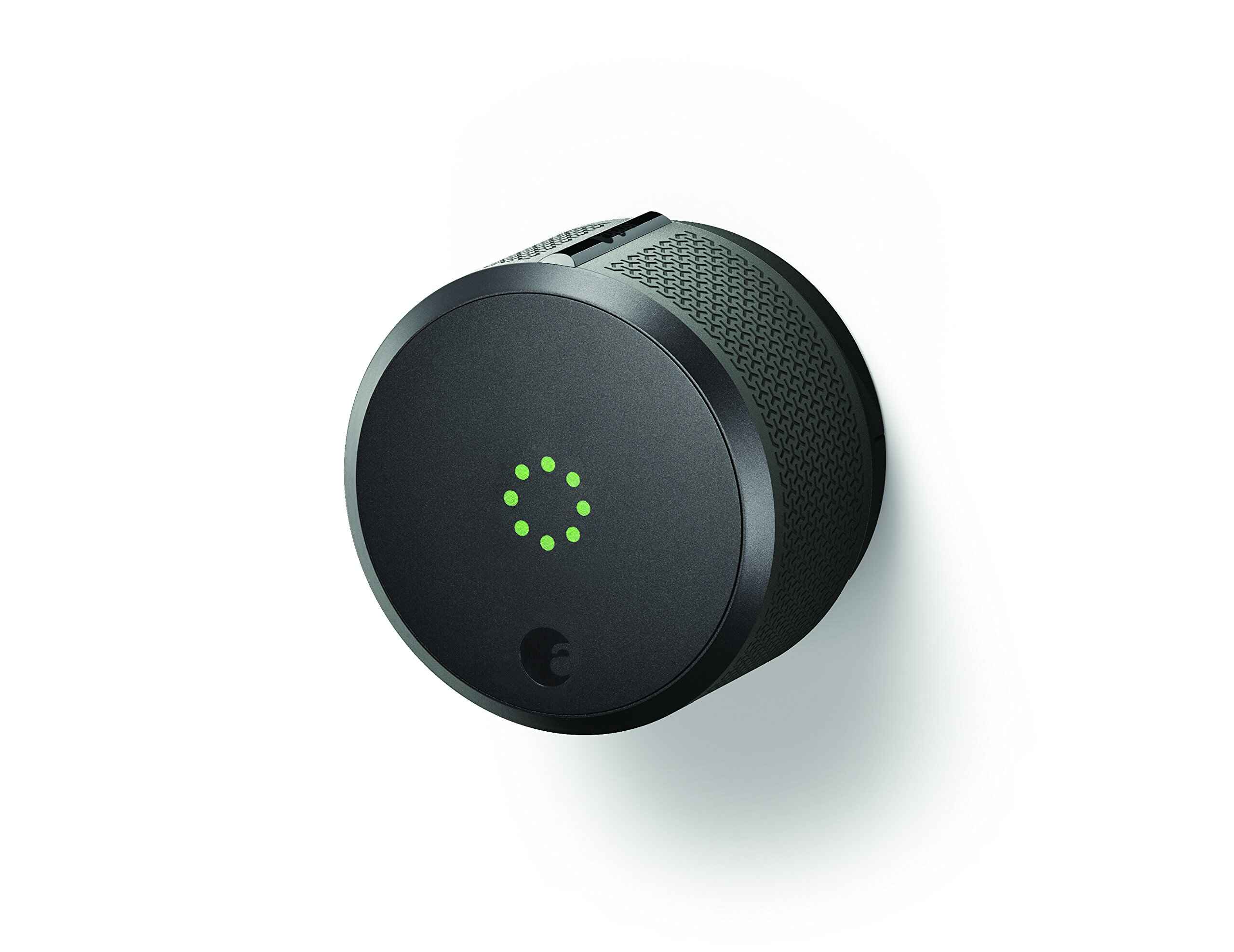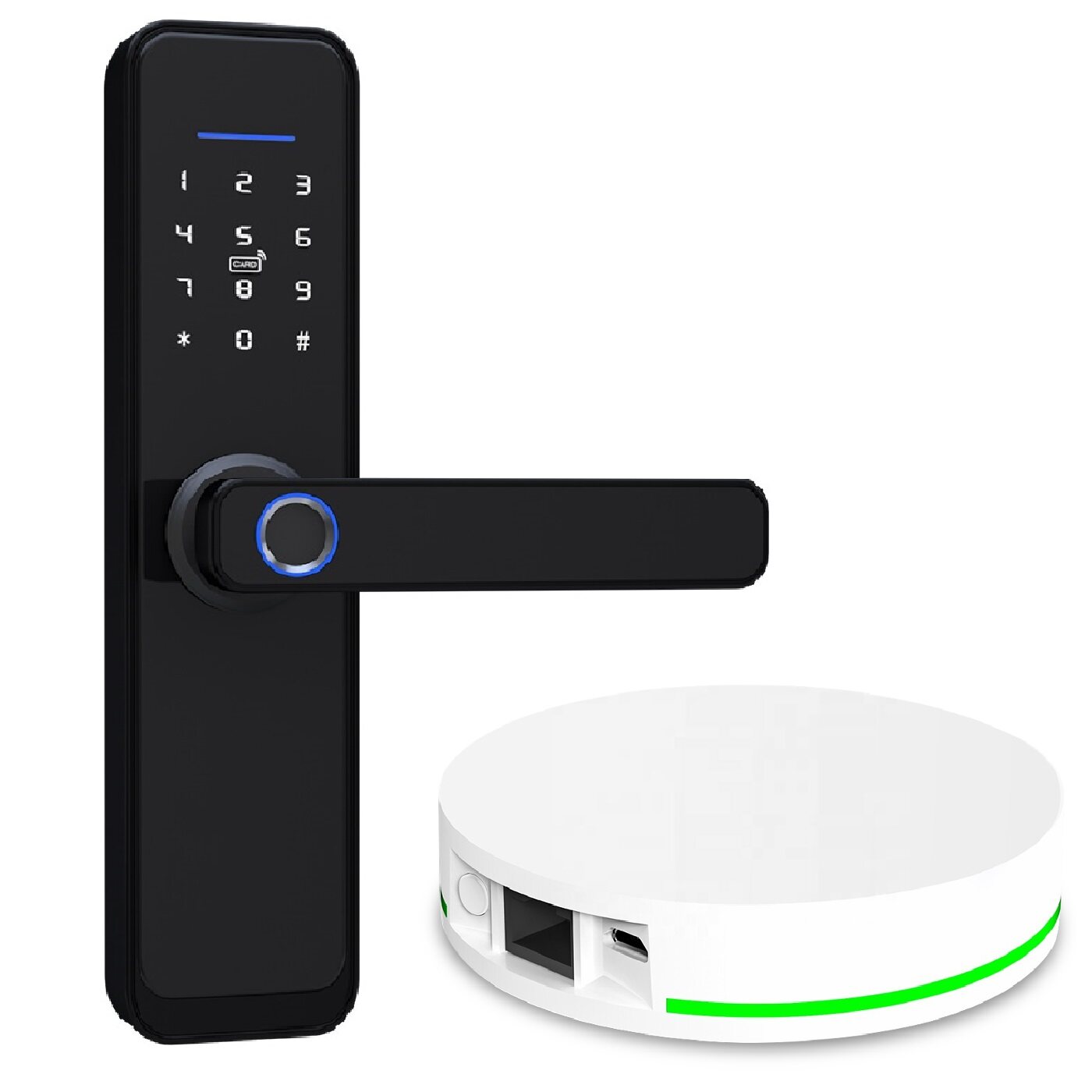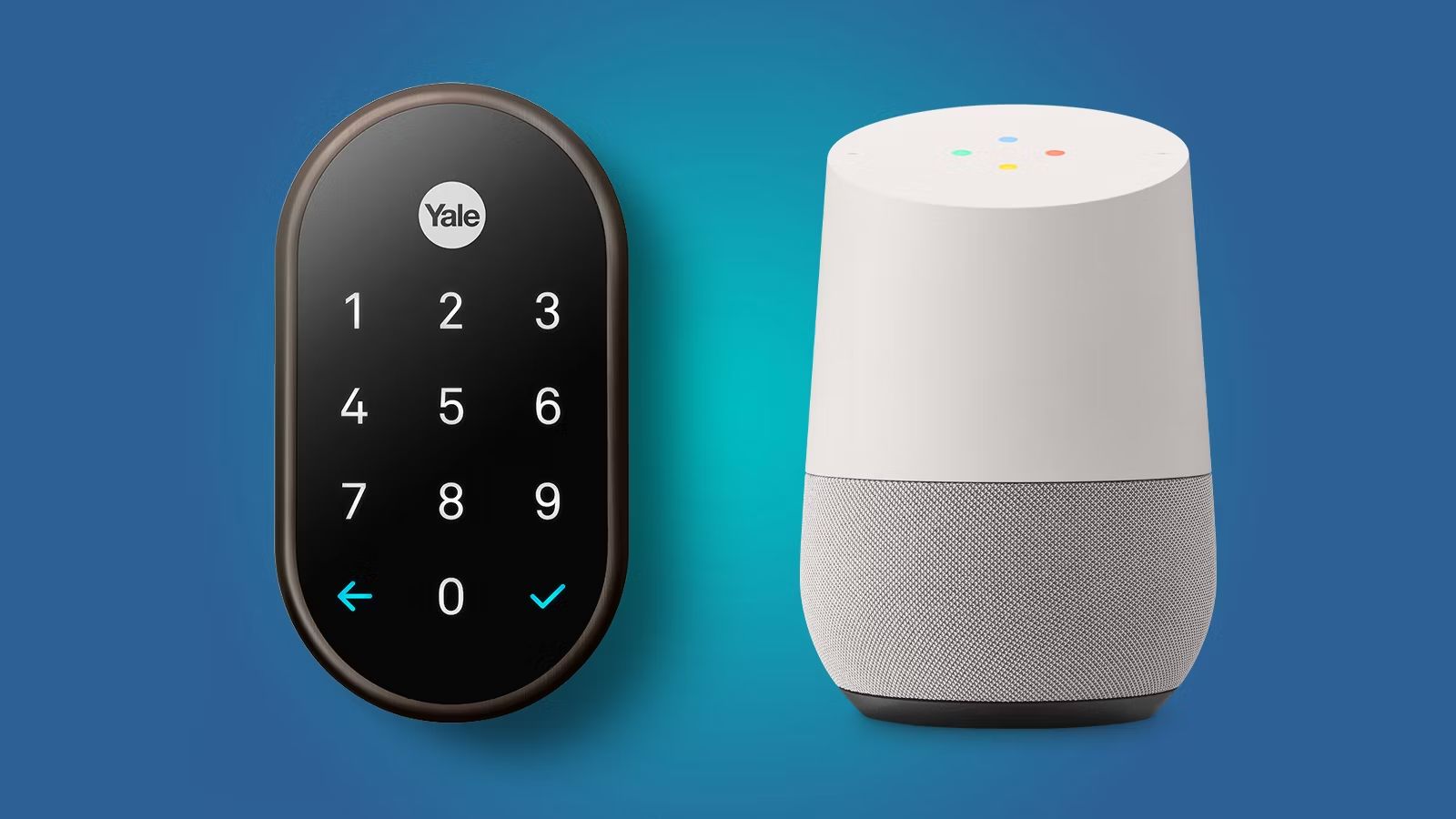Introduction
Welcome to the world of smart locks, where convenience meets security. Gone are the days of fumbling for keys or worrying about misplaced or stolen ones. With a smart lock, you can effortlessly control access to your home or office with just a few taps on your smartphone or a voice command. In this article, we will explore the fascinating realm of smart locks and learn how to unlock them.
Smart locks have revolutionized the way we secure our premises by leveraging advanced technology. These innovative devices offer a range of features that go beyond traditional key-based locks. Whether you are a tech enthusiast, a busy professional, or someone seeking a higher level of security, smart locks offer immense benefits and convenience.
From keyless entry to remote access, smart locks have redefined the concept of home security. They utilize cutting-edge technologies such as Bluetooth, Wi-Fi, or Z-Wave to communicate with your smartphone or other smart devices. This seamless integration allows you to monitor and control access to your property from anywhere in the world.
Smart locks come in various shapes, sizes, and configurations to suit different needs and requirements. Some are designed to replace the entire traditional lock mechanism, while others can be retrofitted onto existing doors. With an array of options available in the market, it is essential to understand the different types of smart locks and their functionalities.
In this article, we will guide you through the step-by-step process of unlocking a smart lock. Whether you are using a PIN code, a fingerprint scanner, or a smartphone app, we will cover the various methods to gain access quickly and securely.
While smart locks offer a plethora of benefits, there may be instances when you encounter issues or challenges. We will also address some common troubleshooting problems and provide solutions to ensure a smooth experience with your smart lock.
Before we dive into the world of smart locks, it is important to understand their advantages and drawbacks. Like any technological innovation, smart locks have their pros and cons which need to be considered before making a decision. We will explore both sides of the coin, allowing you to make an informed choice based on your specific needs.
So, if you are ready to embark on a journey of seamless security and convenience, let us guide you through the fascinating realm of smart locks and how to unlock them.
What is a Smart Lock?
A smart lock is a revolutionary device that replaces traditional key-based locks with advanced technology to provide enhanced security and convenience. It is designed to give you complete control over access to your home or office, eliminating the need for physical keys and providing a seamless user experience.
Unlike conventional locks that require a physical key to unlock, a smart lock relies on electronic mechanisms to grant entry. It utilizes wireless communication technologies such as Bluetooth, Wi-Fi, or Z-Wave to connect with your smartphone, tablet, or other smart devices.
Smart locks come in a variety of forms, including keyless entry systems, biometric locks, and keypad locks. Keyless entry systems eliminate the need for a physical key by enabling access via your smartphone. Using a mobile app, you can lock or unlock your door remotely, grant temporary access to guests, or even receive alerts when someone enters or exits your property.
Biometric smart locks utilize advanced biometric recognition technology to grant entry based on unique physical characteristics such as fingerprints or facial recognition. These locks provide a high level of security while offering the convenience of keyless access.
Keypad locks, on the other hand, require the user to enter a pre-set PIN code to unlock the door. This method is popular in both residential and commercial settings, as it allows multiple users to have their unique access codes.
In addition to keyless entry and enhanced security, smart locks offer several other benefits. They provide a convenient solution for granting access to guests or service providers when you are away from home. With virtual keys, you can grant temporary access to visitors or schedule access for specific time slots.
Another advantage of smart locks is the ability to monitor access activity. Most smart lock systems provide activity logs that allow you to see who entered or exited your property and at what time. This can be particularly useful for keeping track of children, monitoring service providers, or investigating any security breaches.
Smart locks also offer integration with other smart home devices. By connecting to a smart home hub or compatible devices, you can create a synchronized home security system. For example, you can integrate your smart lock with a security camera to receive a live video feed when someone tries to enter your property.
Overall, smart locks provide a secure, convenient, and customizable solution for access control. With their advanced features and integration capabilities, they are fast becoming an essential component of smart homes and offices.
Types of Smart Locks
Smart locks come in various types and configurations, each offering unique features and functionalities. Choosing the right type of smart lock depends on your specific needs, preferences, and the compatibility with your existing door. Let’s explore some of the most common types of smart locks available in the market:
- Keyless Entry Systems: Keyless entry systems eliminate the need for a physical key by allowing access via your smartphone or a key fob. These systems use Bluetooth or Wi-Fi connectivity to communicate with your phone and provide seamless entry with a few taps on your screen.
- Biometric Locks: Biometric smart locks use advanced biometric recognition technology to grant access based on unique physical characteristics such as fingerprints, facial recognition, or iris scans. These locks offer a high level of security as they rely on individual biometric data.
- Keypad Locks: Keypad locks require users to enter a pre-set PIN code to unlock the door. These locks are versatile, allowing you to assign unique access codes to different individuals. Keypad locks are popular for both residential and commercial use.
- Hybrid Smart Locks: Hybrid smart locks offer the best of both worlds by combining traditional key-based access with smart lock technology. These locks allow you to use a physical key as a backup option while also providing the convenience of keyless entry using a smartphone or keypad.
- Wi-Fi-Enabled Smart Locks: Wi-Fi-enabled smart locks connect directly to your home’s Wi-Fi network, allowing you to control access remotely from anywhere in the world. With these locks, you can lock or unlock your door using your smartphone, grant temporary access to guests, or receive notifications whenever the door is accessed.
- Z-Wave Smart Locks: Z-Wave smart locks utilize a wireless communication protocol called Z-Wave to connect with other Z-Wave compatible devices in your smart home network. These locks can be integrated with your smart home hub to create a synchronized security system.
- Smart Deadbolts: Smart deadbolts are designed to replace your existing deadbolt lock, making them an ideal choice if you don’t want to change your entire door lock mechanism. These locks offer keyless entry, remote access, and monitoring capabilities.
When choosing a smart lock, consider factors such as compatibility with your smartphone and smart home system, installation requirements, power source (e.g., battery-powered or hardwired), and the level of security and convenience you desire.
Now that we have explored the different types of smart locks, let’s dive into how these locks work and the process of unlocking them.
How Does a Smart Lock Work?
A smart lock utilizes advanced technology to provide secure and convenient access control. While the exact workings may vary depending on the type and brand of the smart lock, the general principles remain consistent. Let’s delve into how a smart lock works:
Communication Technology: Smart locks use various communication technologies such as Bluetooth, Wi-Fi, or Z-Wave to connect and interact with your smartphone or other smart devices. This allows for seamless communication and control over the lock.
Locking and Unlocking Methods: Smart locks offer multiple methods for locking and unlocking your door. Some common methods include:
- Mobile App: Many smart locks have dedicated mobile apps that you can install on your smartphone. Through the app, you can easily lock or unlock the door with a tap on your screen. Some apps also allow you to grant access to guests and receive notifications about door activity.
- Key Fob or Key Card: Some smart locks provide key fobs or key cards as a physical alternative to smartphone access. These small devices can be carried with you and used to lock or unlock the door by simply tapping them against the lock.
- Keypad: Smart locks equipped with keypads allow you to enter a pre-set PIN code to gain entry. This method is particularly useful when you don’t have your smartphone or other physical keys handy.
- Biometric Recognition: Biometric smart locks employ advanced sensors to identify your unique physical characteristics, such as fingerprints or facial features. By scanning and matching the biometric data, the lock can grant access to authorized individuals.
Power Source: Most smart locks are battery-powered, eliminating the need for wiring or electrical connections. The lock’s batteries can typically last for several months, and you receive alerts when the battery is running low, ensuring that you don’t get locked out unexpectedly. Some smart locks may also have the option for hardwiring into the electrical system of your home.
Integration with Smart Home Systems: Smart locks can integrate with other devices and systems in your smart home ecosystem. By connecting to a smart home hub or compatible devices, you can create automated routines, synchronize your security system, and control your lock alongside other smart devices.
Security Features: Smart locks prioritize security to ensure the protection of your property. They often employ encryption technology to prevent unauthorized access or tampering. Additionally, many smart locks provide activity logs, allowing you to track who entered or exited your space and when.
Remote Access and Control: One of the key advantages of smart locks is the ability to control and monitor access remotely. Whether you are at work, on vacation, or simply away from home, you can lock or unlock your door, grant temporary access, or receive alerts about door activity. This remote access is typically facilitated through mobile apps or web interfaces.
Overall, the combination of advanced technology, communication protocols, secure access methods, and integration capabilities make smart locks a reliable and versatile solution for modern access control.
Now that we understand how smart locks work, let’s dive into the step-by-step guide on how to unlock a smart lock.
Step-by-Step Guide to Unlocking a Smart Lock
Unlocking a smart lock is a straightforward process that can be done using various methods, depending on the type of smart lock you have. Here is a step-by-step guide to unlocking a smart lock:
- Mobile App: If your smart lock is compatible with a mobile app, open the app on your smartphone and ensure it is connected to the smart lock via Bluetooth or Wi-Fi.
- Authenticate: Depending on the security settings, you may need to authenticate your identity, such as using your fingerprint, entering a PIN, or validating your face if your smart lock supports biometric recognition.
- Tap to Unlock: On the app’s home screen, locate the lock icon or the specific unlock button. Tap or click on it to send the unlock command to the smart lock.
- Wait for Confirmation: Wait for a few moments for the smart lock to communicate with the mobile app and unlock the door. Once the lock receives the command and successfully unlocks, you will receive a confirmation on the app.
- Physical Key Fob or Key Card: If your smart lock supports physical key fobs or key cards, locate the designated area on the lock where you can tap or insert the key fob or key card.
- Follow the Instructions: Pay attention to any instructions provided by the smart lock manufacturer. Some locks require a specific way or sequence to tap or insert the key fob or key card for successful unlocking.
- Keypad Entry: For smart locks with a keypad, locate the keypad on the lock. Enter the pre-set PIN code to unlock the door. Remember to input the correct code to avoid any issues.
- Biometric Recognition: If your smart lock offers biometric recognition, place your finger or align your face with the sensor, depending on the type of biometric feature it supports.
- Wait for Verification: Once you have provided the necessary inputs, wait for a moment as the smart lock verifies and matches the entered biometric data with its records. Once the match is confirmed, the lock will unlock the door.
It is important to note that the specific steps may vary depending on the brand, model, and features of your smart lock. Always refer to the manufacturer’s instructions for detailed guidance on how to unlock your specific smart lock.
With these simple steps, you can effortlessly unlock your smart lock and gain secure and convenient access to your home or office.
Now, let’s move on to the next section and explore some common troubleshooting issues that you may encounter while using a smart lock.
Troubleshooting Common Issues
While smart locks are designed to provide seamless access control, occasional issues may arise. Here are some common troubleshooting tips for addressing common problems you may encounter with a smart lock:
1. Connection Problems: If you are experiencing connectivity issues between your smartphone and the smart lock, make sure that Bluetooth or Wi-Fi is enabled on your device. Ensure that your smartphone is within range of the lock and that there are no obstructions or interference affecting the signal.
2. Battery Replacement: If your smart lock is running on batteries, check if the batteries are running low. Replace the batteries with fresh ones as needed. Some smart locks provide low battery notifications to alert you when it is time to replace them.
3. App Updates: Keep your smart lock’s mobile app up to date. Check for any available updates in the app store and install them. Updated app versions often include bug fixes and performance improvements.
4. PIN Code Issues: If you are having trouble with the PIN code entry, double-check that the correct code is being entered. Make sure there are no typing errors or incorrect sequences. If necessary, refer to the manufacturer’s instructions on setting or changing the PIN code.
5. Biometric Recognition: If your smart lock supports biometric recognition and is not recognizing your fingerprint or face, ensure that the sensor or camera is clean and free from any obstructions. Try registering your biometric data again or contact the manufacturer for further assistance.
6. Power Supply: If your smart lock is hardwired, check the power supply to ensure it is functioning properly. If there is a power outage, the lock may not respond. Consider having a backup power source, such as a battery backup, to ensure uninterrupted operation.
7. Firmware Updates: Check if there are any firmware updates available for your smart lock. Manufacturers often release firmware updates to address known issues and enhance performance. Follow the manufacturer’s instructions for updating the firmware.
8. Resetting the Lock: If all else fails and you are still experiencing issues, you may need to reset the smart lock to its factory settings. Refer to the manufacturer’s instructions on how to perform a reset. Keep in mind that a factory reset will erase any stored data or settings on the lock.
9. Contact Customer Support: If you have tried troubleshooting the issue and are still encountering problems, it is advisable to contact the customer support of the smart lock manufacturer. They can provide specific guidance and assistance tailored to your lock’s model and features.
Remember, troubleshooting steps may vary depending on the brand and model of your smart lock. Always refer to the manufacturer’s instructions, user manual, or support resources for detailed troubleshooting guidance specific to your smart lock.
By following these troubleshooting tips, you can resolve common issues and ensure smooth operation of your smart lock.
Now, let’s move on to explore the benefits and drawbacks of using smart locks.
Benefits and Drawbacks of Smart Locks
Smart locks offer a range of benefits that make them an appealing choice for enhancing access control and security. However, like any technology, they also have certain drawbacks that are important to consider. Let’s explore the benefits and drawbacks of smart locks:
Benefits:
- Convenience: Smart locks provide a convenient way to lock and unlock your doors without the need for physical keys. With features such as mobile apps and keyless entry, you can easily control access to your property using your smartphone or other smart devices.
- Enhanced Security: Smart locks offer advanced security features such as biometric recognition, activity logs, and remote monitoring. The ability to receive real-time notifications about door activity and grant temporary access to guests enhances the overall security of your property.
- Flexibility: Smart locks offer flexibility in granting access. Whether it’s allowing guests, service providers, or family members to enter your property, you can easily manage access levels and set specific time frames for access, providing greater control and flexibility.
- Integration with Smart Home Systems: Smart locks can be integrated with other smart home devices and systems, such as security cameras or voice assistants. This integration allows for synchronized functionality, such as unlocking the door when your security camera detects motion or using voice commands to control the lock.
- Keyless Entry: With smart locks, you no longer need to carry a physical key. This eliminates the risk of losing keys or having them stolen. Keyless entry also eliminates the need for key duplication or rekeying when granting access to multiple individuals.
Drawbacks:
- Vulnerability to Hacking: Like any connected device, smart locks can be vulnerable to hacking attempts. It is crucial to choose a reputable brand and regularly update firmware to mitigate security risks and protect against unauthorized access.
- Dependence on Technology: Smart locks heavily rely on technology, which means that power outages, connectivity issues, or software malfunctions can potentially result in a lack of access or functionality. Having backup access methods or power supplies can help mitigate these risks.
- Compatibility Limitations: Certain smart locks may be limited in compatibility with specific smartphone platforms or smart home ecosystems. It is vital to ensure that the smart lock you choose is compatible with your preferred devices and systems to avoid any compatibility issues.
- Installation and Set-Up: Installing a smart lock or retrofitting an existing lock system may require some technical knowledge or professional assistance. Additionally, the initial set-up and configuration process may take time and effort to ensure proper functionality and integration with your smart home network.
- Cost: Smart locks can be more expensive than traditional locks, especially if you opt for advanced features such as biometric recognition or remote access capabilities. However, it is important to consider the long-term benefits and convenience that smart locks provide.
It’s important to weigh the benefits and drawbacks of smart locks when considering whether or not to invest in them. Assess your specific needs, security requirements, and budget to make an informed decision.
Now that we have explored the benefits and drawbacks of smart locks, let’s wrap up this article.
Conclusion
Smart locks have revolutionized access control and security, offering convenience, enhanced features, and peace of mind. These innovative devices eliminate the need for traditional keys and provide a range of benefits, including keyless entry, remote access, and integration with smart home systems.
Throughout this article, we have explored what smart locks are and how they work. We have learned about the different types of smart locks available, including keyless entry systems, biometric locks, and keypad locks. Additionally, we discussed the step-by-step process of unlocking a smart lock using methods such as mobile apps, physical key fobs or key cards, keypad entry, and biometric recognition.
While smart locks offer numerous advantages, it is important to consider potential drawbacks. Issues such as connectivity, power supply, compatibility limitations, and security vulnerabilities may arise. However, with proper installation, regular updates, and adherence to security best practices, these risks can be minimized.
Ultimately, the decision to invest in a smart lock depends on your individual needs and preferences. Consider the level of convenience, security, and flexibility you seek, as well as the compatibility with your smart home setup. Evaluate the benefits and drawbacks to make an informed decision that aligns with your priorities.
As technology continues to advance, smart locks will likely become increasingly popular as an essential component of modern access control systems. They offer a seamless user experience, improved security, and integration with other smart devices to create a synchronized home or office environment.
With the knowledge gained from this article, you are now equipped to explore the world of smart locks, make an informed decision when choosing a smart lock, and confidently use and troubleshoot common issues that may arise.
Embrace the convenience, security, and flexibility that smart locks provide as you unlock the doors to a smarter and more secure future.







